Teaching English Prosodic Pragmatics (TEPP)

| Research project funded by the Ministry of Science and Innovation of Spain PID2019-105678RB-C22 |
Teaching English Prosodic Pragmatics (TEPP) presents the basic concepts of English prosody (stress, rhythm and intonation). You can also learn the relationship between prosody and pragmatics (meaning in context) with audio examples to achieve effective communication in real situations. With our app you can share your recordings with our research team for evaluation.
For a better sound quality, please use headphones and a microphone
ENGLISH STRESS AND RYTHM
part A
Rhythm is the perception of stressing certain words with certain regularity in a sentence.
The picture below indicates the main patterns across languages. English is a stress-timed language in which the stress occurs at regular intervals -represented with the adults. Other languages like Spanish, French or Italian work on a different principle (syllable-timed). These languages give the impression of giving the same length to each word (represented by the soldiers), regardless of whether the word is lexical or grammatical. Here each syllable (word) appears to have approximately equal time value.
Example 1: Pronunciation is important
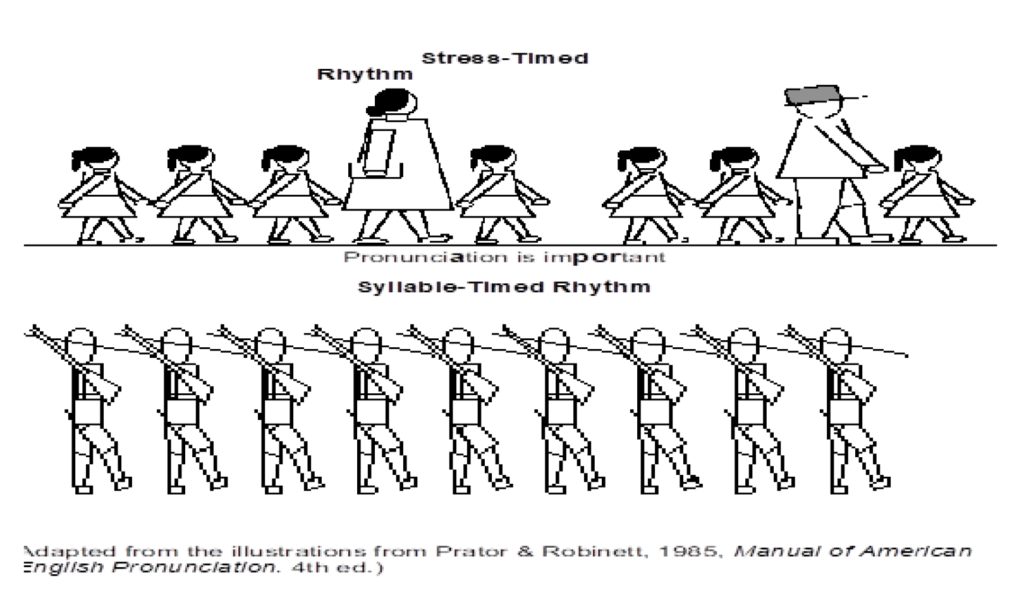
In English you need to emphasise words such as nouns, adjectives, adverbs, and main verbs. Also, you shouldn´t emphasise words such determiners (e.g. “the”, “an”), conjunctions (e.g. “and”, “but”), pronouns (e.g. “she”, “them”), prepositions (e.g. “at”, “from”), auxiliary verbs (e.g. “do”, “be”, “can”). You do this by compressing or reducing the pronunciation of these grammatical words.
Other examples (stressed syllables are in bold):
Example 2: I love my cat.
Example 3: The house was full of children.
part B
In English, the words that are more likely to receive stress or emphasis are lexical words such as nouns, adjectives, adverbs, and main verbs. These words carry the main meaning in a sentence. The unstressed or compressed words carry relatively little information and are called grammatical words: determiners (e.g. “the”, “an”), conjunctions (e.g. “and”, “but”), pronouns (e.g. “she”, “them”), prepositions (e.g. “at”, “from”), auxiliary verbs (e.g. “do”, “be”, “can”). You do this by compressing or reducing the pronunciation of these grammatical words.
This difference in the distribution of stresses makes each language unique in how they sound and this is because of the rhythmic patterns that you have just learned.
Say phrase a, b, c and d. aloud and slowly, with emphasis on the words in bold in all the lines. They should all last the same time so, reduce the time of the words that are not in bold. You can clap at regular intervals matching the words in bold with your clap.
| a. one | two | three | four | |||
| b. one | and | two | and | three | and | four |
| c. one | and a | two | and a | three | and a | four |
| d. one | and then a | two | and then a | three | and then a | four |
You may have realized that the 4 sentences occupy approximately the same amount of time and that the underlined words are pronounced at regular intervals. To maintain this regularity, you need to ‘squash’ (saying faster and reducing) the grammatical words “and”, “then”, “a”. For example, “and” and “a” together sound like “ana” since /d/ in “and” tends to be elided (not pronounced) and also /n/ “an” is linked to “a”. This combination of stressing and unstressing words makes English rhythm possible.
You can now practise with a metronome at a speed of 60 bpm (beats per minute)
Other examples are the following (stressed syllables are underlined):
Example 4. Ask them to come to the party.
Example 5. Bill and Mark have left.
Example 6. I’ve lost an umbrella.
Stress and syllable timing.
Each of the following sentences contains two stressed syllables, but the first sentence has a total of 3 syllables and the second a total of 5 syllables.
Sentence 1. Put it down (3 syllables, 2 stresses)
Sentence 2. Put it over there (5 syllables, 2 stresses)
You can say both sentences by taking roughly the same time. You can do this by emphasizing the stressed syllables and ‘squashing’ the unstressed syllables.
However, if you say both sentences giving equal emphasis to all the syllables, you may notice that both sound strange and not typical of English. This happens because you are applying in this particular case the typical rhythm of Spanish or Italian (syllable-timed languages) to a stressed-time language like English.
Adapted from Underhill, A. 2005. Sound Foundations. Learning and Teaching Pronunciation. Oxford: Macmillan Education.
THE ENGLISH INTONATION SYSTEM
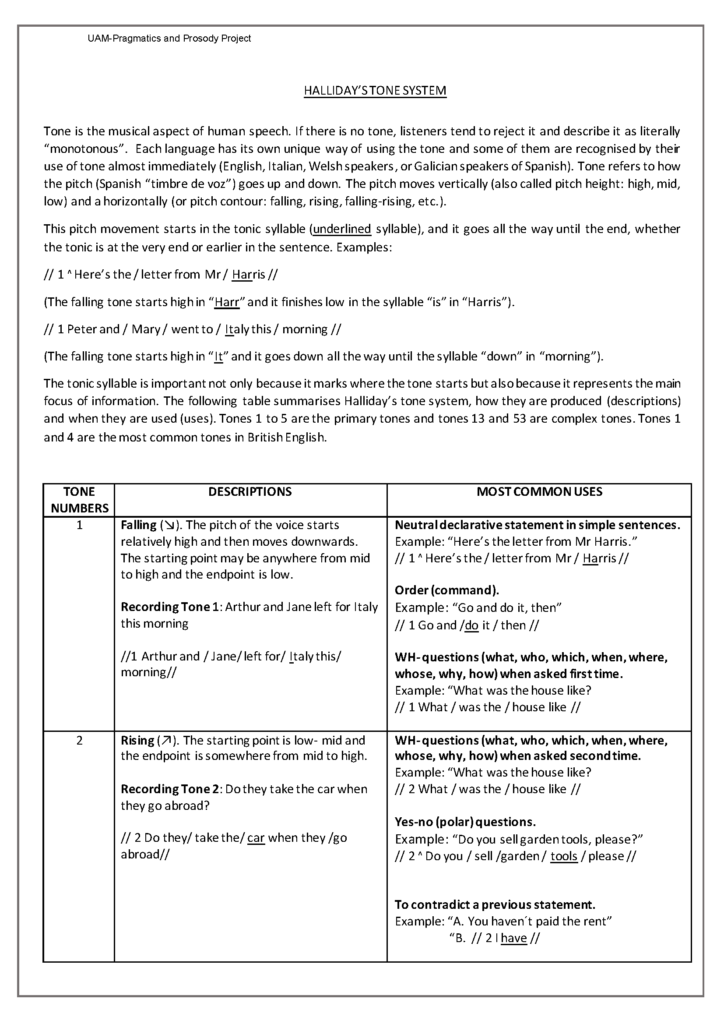
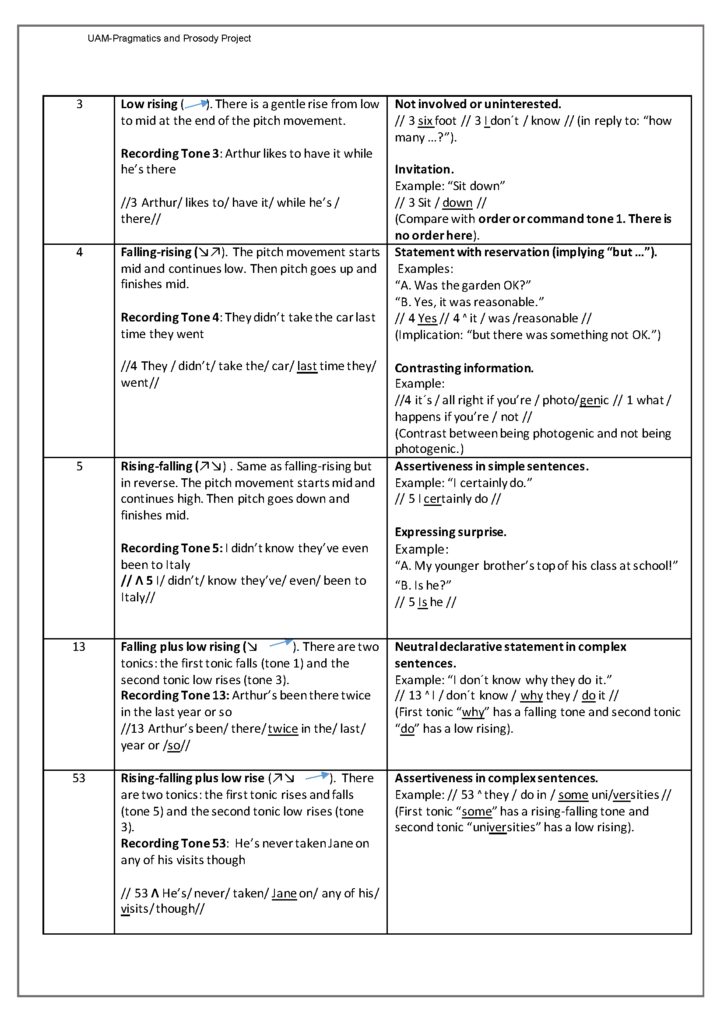
PRACTISE ENGLISH STRESS AND RHYTHM WITH THE PRIMARY TONES
TONE 1: //1 Peter and / Mary / went to / Italy this / morning //
TONE 2: //2 Do they/ take the/ car when they /go abroad//
TONE 3: //3 Arthur/ likes to/ have it/ while he’s / there//
TONE 4: //4 They / didn’t/ take the/ car/ last time they/ went//
TONE 5: // 5ꓥ _I/didn’t/ know they’ve/ even/ been to /Italy//
PRACTISE ENGLISH STRESS AND RHYTHM WITH THE COMPOUND TONES
TONE 13: //13 Arthur’s been/ there/ twice in the/ last/ year or /so//
TONE 53: // 53 ꓥ_He’s/ never/ taken/ Jane on/ any of his/ visits/ though//
NOW READ the following dialogues and LISTEN to the recordings paying attention to their pragmatic (communicative) function.
The reader has a standard southern English accent, which will help you to communicate effectively with most native speakers worldwide.
LISTEN TO THE DIALOGUES ABOUT HEALTH
Dialogue 1
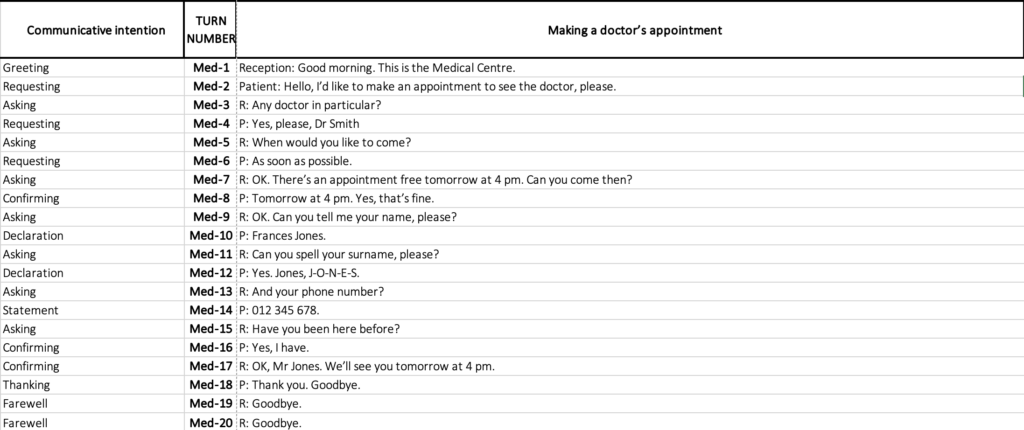
Dialogue 2
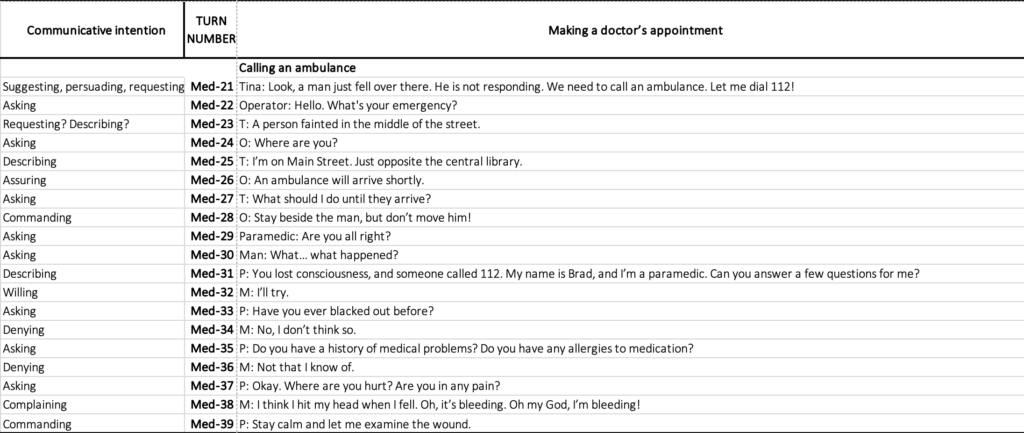
Dialogue 3

Dialogue 4

Dialogue 5

LISTEN TO THE DIALOGUES ABOUT TOURISM
Dialogue 1
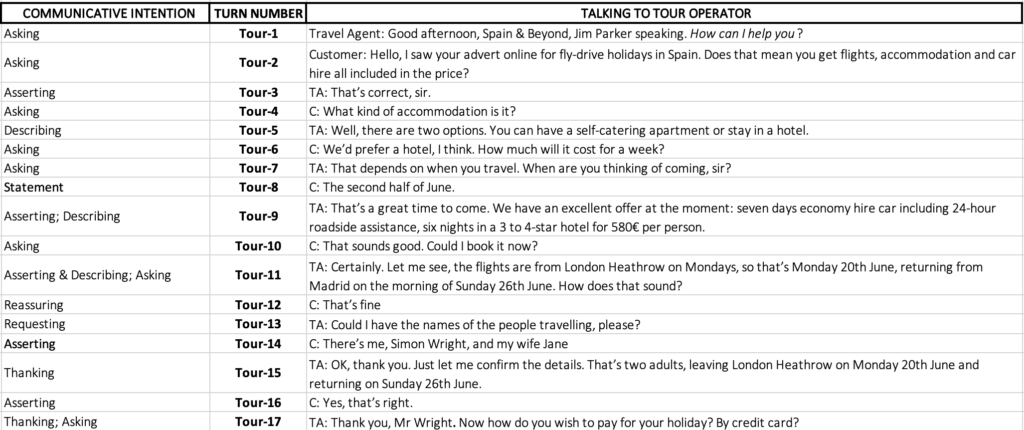
Dialogue 2

Dialogue 3

Dialogue 4

Dialogue 5

Dialogue 6
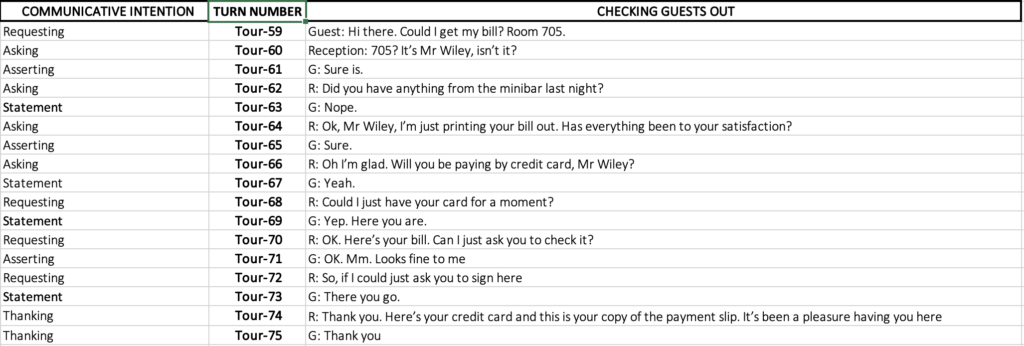
NOW CHECK YOUR PRONUNCIATION
PRACTISE the texts and RECORD your voice
YOU CAN SHARE YOUR FINAL RECORDINGS to evaluate your pronunciation through our Google Class
Class code: wiiafkv
Class link
https://classroom.google.com/c/NTYwMzI4NzIzMjA4?cjc=wiiafkv
TELL US which is your first language (mother tongue) and your level of English (A1, A2, B1, B2, C1 or C2) and we will assess your pronunciation
ADVANCED TECHNICAL TIPS
Use Google Chrome and get familiar with the mote.com extension. It will help you to record and share your pronunciation with our team. You can save your readings in your profile.
If you prefer not to use Chrome, you can also use mote.com with other browsers (Safari, Mozilla, etc).
We hope that you enjoy learning English prosodic pragmatics with TEPP
THE TEPP-PROSODIC PRAGMATICS TEAM
Prof. Jesús Romero–Trillo (Universidad Autónoma de Madrid)-Project Director
Dr. María Dolores Ramírez Verdugo (Universidad Autónoma de Madrid)
Dr. Raúl Jiménez Vilches (Universidad Autónoma de Madrid)
Dr. Eva M. Mestre-Mestre (Universitat Politècnica de València)
Dr. Nancy Avila Ledesma (Universidad de Extremadura)
Dr. Yalda Sadeghi (Universidad Autónoma de Madrid)
Dr. Pauline Madella (University of Bedfordshire)
We are grateful to Mr. Christopher Dove for the recordings.
To quote this app:
Romero-Trillo, J; Ramírez-Verdugo, D; Jiménez-Vilches, R.; Mestre-Mestre, E.; Avila, Ledesma, N.; Y. Sadeghi and P. Madella. 2022. Teaching English Prosodic Pragmatics APP (TEPP). Available in Google Play and Apple Store.
